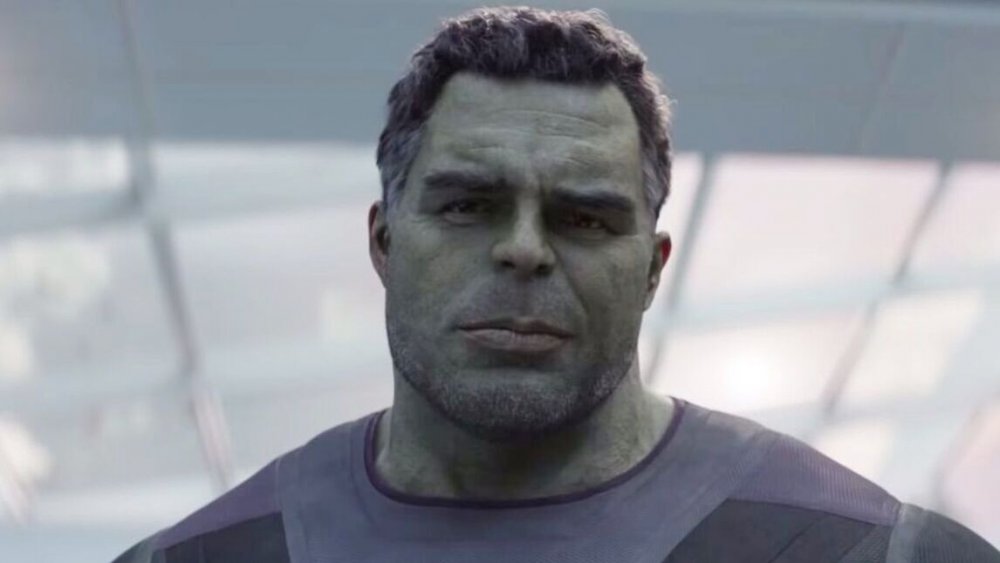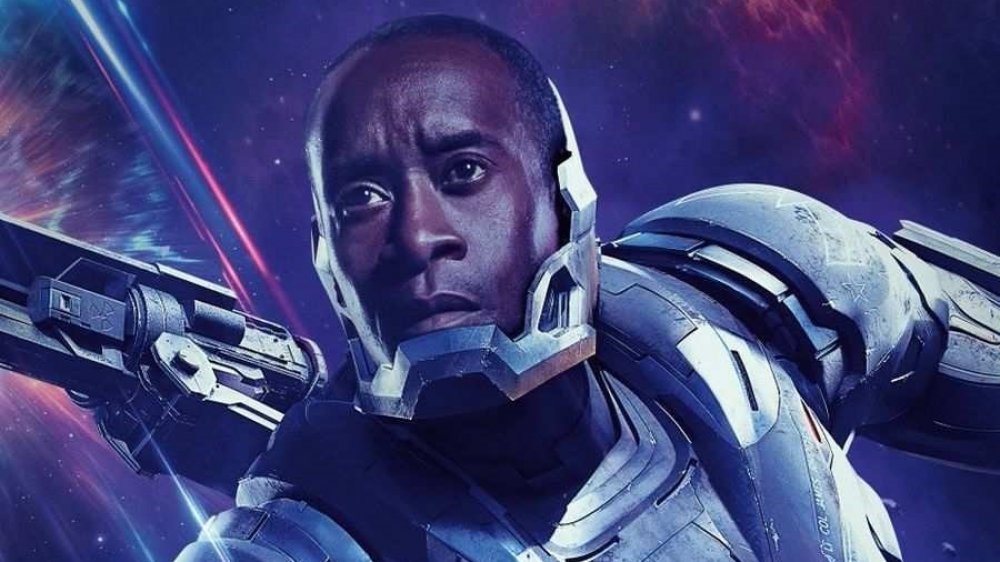The Amazing Scene That Almost Happened In Endgame
Avengers: Endgame almost saw Bruce Banner face off against arguably his greatest foe... himself.
In a recent interview, co-writers Christopher Markus and Stephen McFeely revealed that they scripted a scene in which Banner meets his angry, green alter-ego in a Soul Stone-induced vision after using the Stark Gauntlet to bring back all of the dusted heroes. The scene, unfortunately, never made it before the cameras. (via CinemaBlend)
The scene followed a rule of sorts established in Avengers: Infinity War, in the poignant scene in which Thanos encounters young Gamora inside the Soul Stone after snapping away half of all life in the universe. Thanks to Endgame's titanic run time, however, the "rule" was never invoked again; a scene was shot in which Tony Stark has a Soul Stone-based conversation with an older version of his daughter Morgan after he uses the Infinity Stones to dust Thanos and his army, but it ended up on the cutting room floor.
The scene in which Banner and Hulk hash out their differences after the restorative snap existed in an early draft of the script, according to Markus. "We did actually write a version, and this existed before the Ancient One scene was slowly beaten out, but there was a version where it was Banner talking to The Hulk," the scribe recalled. "And we never shot it, but it was kind of a cool thing to get them both on screen together interacting."
We disagree; it would have been a really cool thing, but when you're crafting the epic conclusion to a decade-long saga involving dozens of characters, you simply can't include every single cool idea you might have. In fact, it probably won't surprise you to know that the Banner/Hulk sequence was far from the only one to be scripted for Endgame, only to get cut before the cameras rolled.
What other Endgame scenes didn't make the cut?
After the devastating events of Infinity War, Markus and McFeely used Endgame's five-year time jump to, in effect, explore the effects that such a brutal loss would have on the Avengers. They all took interesting, and often unexpected, directions; Banner merged the two halves of himself to permanently become Smart Hulk, Hawkeye became a bloodthirsty vigilante, and Thor got drunk and bro-y, for example. But in an early draft of the screenplay, one team member — James Rhodes, AKA War Machine — made a pretty big leap from superheroism to the highest levels of politics.
"We took it out because it didn't have any story weight, but I believe that during one draft, in the five year jump, Rhodey became vice president," Markus said in a recent chat with ComicBook.com. It actually makes a lot of sense; he was a decorated career soldier before suiting up, he was pro-registration during the events of Captain America: Civil War, and he's so darn patriotic that he was briefly referred to as the Iron Patriot. Heck, Rhodey could step out of the MCU and into our universe to run for office, and he'd have our vote.
Another scene involved a character that Marvel fans have been waiting patiently to see onscreen forever: Richard Rider, the man called Nova. In the comics, Rider is an Earthling tapped by Rhomann Dey, the last survivor of the destruction of Xandar, to house the entirety of that planet's knowledge — the "Xandarian Worldmind" — and the combined power of its armed forces, the Nova Corps.
Xandar, its leader Nova Prime (Glenn Close), and Dey (John C. Reilly) were all introduced in 2014's Guardians of the Galaxy, but Rider was not — and if the character had been included in Endgame, his backstory would have been significantly tweaked. Also, it would have been he, and not Hulk, who would have come crashing to Earth in the movie's opening moments to warn the Avengers of Thanos' impending arrival.
"I remember in the big manifesto thing that we did, where the first work we did on these movies where we just... every possible storyline that you could take from what's around, that Nova has the Xandarian Worldmind," Markus told ComicBook.com. "In this conception, he would be the herald, not unlike the Hulk... that one member of the Nova Corps [who] survived Thanos' attack. The Xandarian Worldmind would be the voice of Glenn Close, because you had her, and why not? And that he would be Richard Rider and he would come to earth... it would've been amazing."
Another choice that was kicked around early in the scripting process would have altered Endgame's narrative even more drastically. In a wide-ranging sitdown with the New York Times, the ace writing duo explained that originally, the Avengers' time travel shenanigans didn't involve a return to the Battle of New York.
"In the first draft, we didn't go back to the Avengers movie," McFeely said. "We went back to Asgard. But there's a moment... if you're paying very close attention, where the Aether is there and the Tesseract is in the vault. In that iteration, we were interested in Tony [Stark] going to Asgard. He had a stealth suit, so he was invisible, and he fought Heimdall, who could see him."
Markus went on to explain that in this version, Natalie Portman's Jane Foster would have played a much bigger role (Portman didn't even film any new scenes for her brief Endgame appearance), and that Thor would have shared a number of scenes with her. That is all very interesting, but now we can't stop thinking about an invisible Iron Man fighting Heimdall. Look, we understand that massive projects like this go through lengthy bouts of revision, and ultimately, Markus and McFeely did an amazing job of crafting the complex and crowded narratives of Infinity War and Endgame.
But... invisible Iron Man fighting Heimdall. Of all the cool things the scribes were forced to cut, this has got to be the coolest. If the producers of the upcoming Disney+ series What If...? haven't been made aware that this was once on the table, someone needs to clue them in, pronto.

